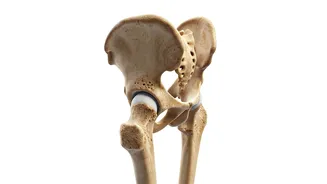Walking: A Beginner's
Walking is a simple yet incredibly powerful form of exercise, offering numerous health benefits that are easily accessible to everyone. It's gentle on the
joints, making it suitable for people of all ages and fitness levels. Regular walking can improve cardiovascular health, strengthen muscles, and boost mood. Unlike high-impact exercises, walking reduces the risk of injury while still providing a significant workout. It can be easily incorporated into daily routines, whether it's a brisk walk during your lunch break, an evening stroll, or a weekend hike. Walking also allows you to enjoy the outdoors, reducing stress and enhancing overall well-being. It is a fundamental activity that supports a healthier and more active lifestyle.
Calorie Burning Explained
Calorie burning is a crucial aspect of weight management and overall health. When you engage in physical activities like walking, your body utilizes calories to fuel the movement. The rate at which you burn calories depends on several factors, including your weight, intensity of the activity, and duration. For instance, a person weighing around 65 kg can burn a specific number of calories through a particular walking pace. Understanding this relationship can help individuals tailor their walking routines to meet their fitness goals. Tracking your calorie expenditure can provide motivation and a sense of accomplishment, encouraging consistent exercise and a balanced lifestyle. Monitoring calorie intake and expenditure is pivotal for maintaining a healthy weight and improving overall health.
Optimal Pace & Results
To burn approximately 300–400 calories in an hour, while weighing around 65 kg, finding the right walking pace is key. This level of calorie expenditure typically involves a brisk pace, which is faster than a leisurely stroll but not as intense as running. The exact speed will vary based on individual fitness levels and terrain, but generally, it involves maintaining a consistent pace that elevates your heart rate. Walking at a consistent pace is preferable. Maintaining this pace over the hour can significantly contribute to your fitness goals. Regularly achieving this calorie burn can lead to noticeable improvements in cardiovascular health, increased endurance, and improved overall physical fitness. Consistent effort is critical.
Adapting to Your Needs
Adjusting your walking routine is crucial to maximizing its benefits and ensuring it aligns with your personal fitness goals and physical capabilities. If you are a beginner, start with shorter walks at a comfortable pace and gradually increase the duration and intensity as your fitness improves. Consider incorporating interval training, where you alternate between periods of brisk walking and slower recovery periods, to enhance calorie burn and improve stamina. If you find the recommended pace challenging, modify it to a speed you can sustain comfortably, allowing for the opportunity to build stamina. Pay attention to your body and rest when needed to avoid overexertion or injury. Walking should be a pleasant and sustainable part of your lifestyle.
Making Walking a Habit
Making walking a regular habit requires integrating it seamlessly into your daily routine. Set realistic goals, such as walking for a specific duration or distance each day or week, and track your progress to stay motivated. Find activities that support your walking routine. This might involve walking during your lunch break, choosing stairs over elevators, or exploring new walking routes in your neighborhood. Recruit a friend or family member to walk with you; the social aspect can provide encouragement and accountability. Celebrate your achievements, whether it's reaching a fitness milestone or simply enjoying the outdoors. By making walking a consistent part of your life, you'll reap numerous health benefits and enjoy a more active, fulfilling lifestyle.













